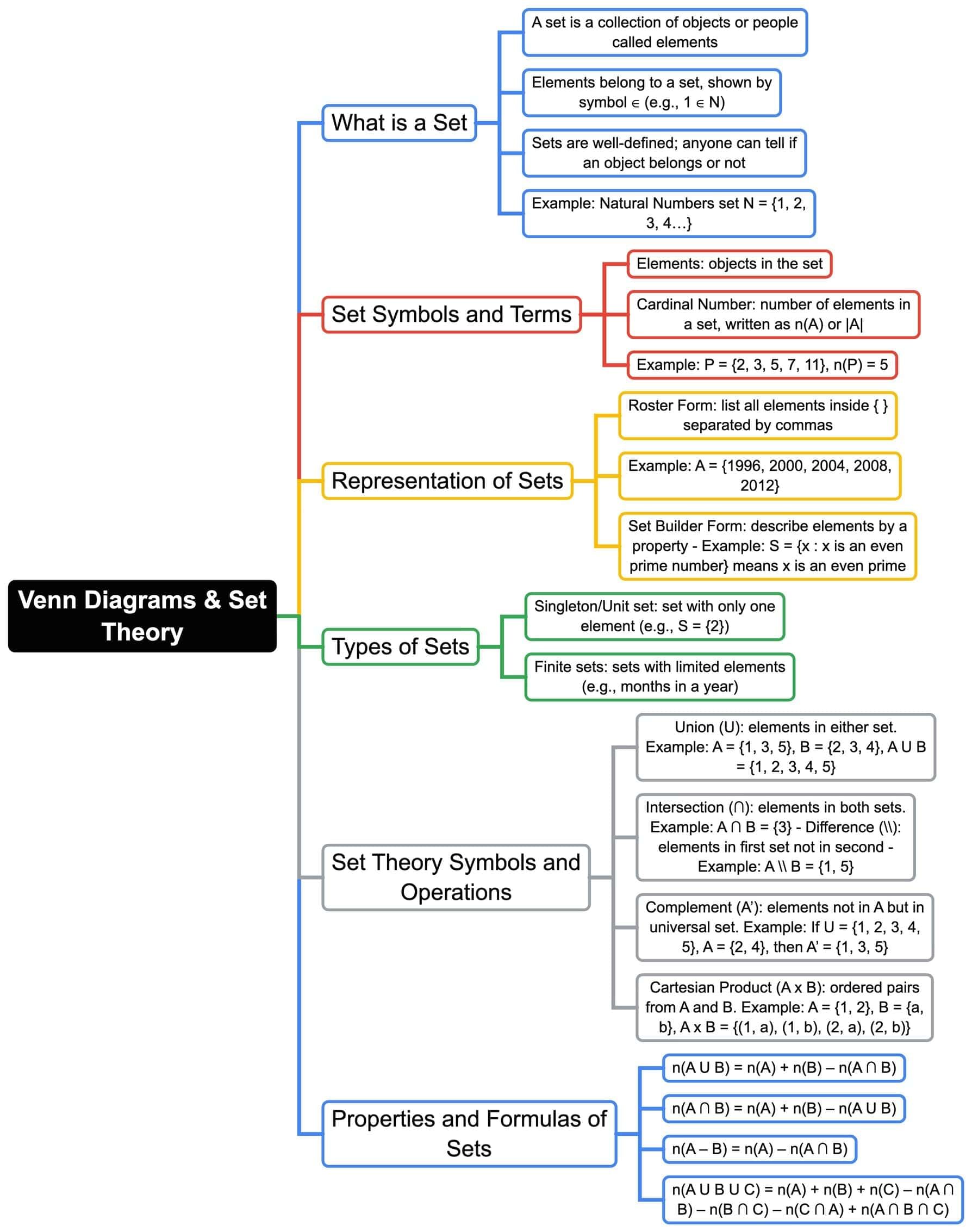CAT Exam > CAT Notes > Logical Reasoning (LR) and Data Interpretation (DI) > Mindmap: Venn Diagrams & Set Theory
Mindmap: Venn Diagrams & Set Theory | Logical Reasoning (LR) and Data Interpretation (DI) - CAT PDF Download

The document Mindmap: Venn Diagrams & Set Theory | Logical Reasoning (LR) and Data Interpretation (DI) - CAT is a part of the CAT Course Logical Reasoning (LR) and Data Interpretation (DI).
All you need of CAT at this link: CAT
|
87 videos|172 docs|99 tests
|
FAQs on Mindmap: Venn Diagrams & Set Theory - Logical Reasoning (LR) and Data Interpretation (DI) - CAT
| 1. What is the basic concept of set theory and how does it relate to Venn diagrams? |  |
Ans. Set theory is a branch of mathematical logic that studies collections of objects, known as sets. It provides the foundational language for mathematics and allows for the exploration of relationships between different sets. Venn diagrams are graphical representations of sets and their relationships, often used to illustrate intersections, unions, and differences between sets. They visually depict how sets overlap and interact, making complex relationships easier to understand.
| 2. How do you determine the union and intersection of two sets using Venn diagrams? |  |
Ans. The union of two sets, denoted as A ∪ B, includes all elements that are in either set A or set B or in both. In a Venn diagram, this is represented by shading the areas of both circles. The intersection of two sets, denoted as A ∩ B, includes only the elements that are common to both sets. In a Venn diagram, this is shown by shading the overlapping area of the two circles.
| 3. What are some real-life applications of Venn diagrams and set theory? |  |
Ans. Venn diagrams and set theory have numerous applications in real life, including but not limited to: organizing information in databases, analyzing survey data, decision-making processes in business, and understanding relationships in social networks. They are also used in logic and probability, helping to visualize and solve problems involving various sets and their interactions.
| 4. Can you explain the difference between disjoint sets and overlapping sets? |  |
Ans. Disjoint sets are sets that have no elements in common; their intersection is empty (A ∩ B = ∅). In a Venn diagram, this is represented by two separate circles that do not touch. Overlapping sets, on the other hand, share some elements, meaning their intersection is not empty (A ∩ B ≠ ∅). In a Venn diagram, this is shown by two circles that intersect, highlighting the shared elements.
| 5. What is the significance of the universal set in set theory? |  |
Ans. The universal set, often denoted by U, is the set that contains all possible elements under consideration for a particular discussion or problem. It serves as the context within which all other sets are defined. In set theory, understanding the universal set is crucial because it helps in determining subsets, complements, and relationships among various sets, allowing for a complete analysis of the situation being examined.
Related Searches















